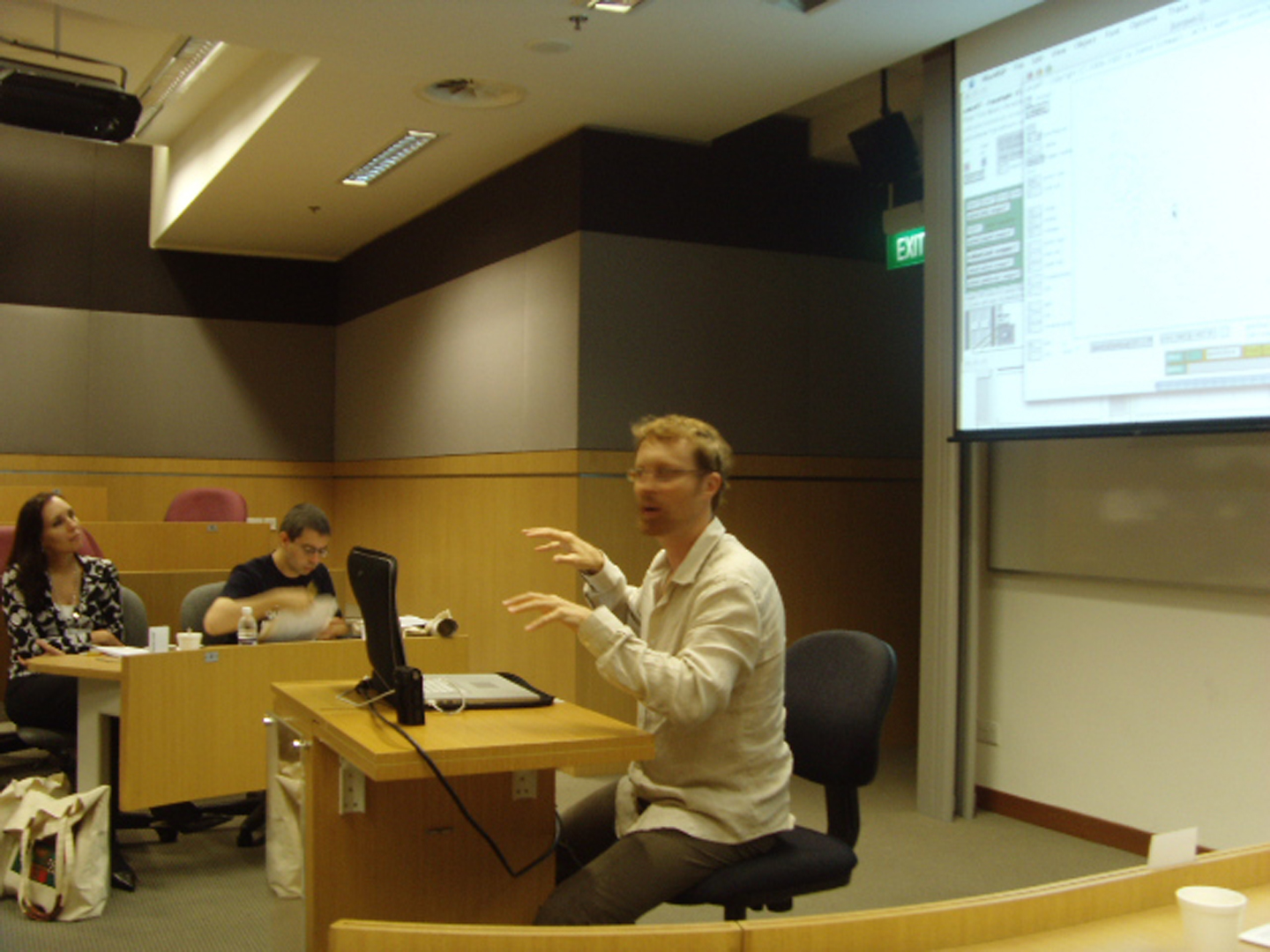“Project Time revisited: thoughts on skin therapy, urban planning and Singaporean Angst” presented by Koh and Lindborg
Session Title:
Presentation Title:
Presenter(s):
Abstract:
This article examines the philosophical fundament for the composition of Project Time. The composition conceives ‘time’ as the domain where the old and the new coexist in Singapore, articulated through the confrontation and cohabitation of Indian and Chinese drum traditions, as well as interactive computer manipulated sound.
The first part of the article describes how Project Time was conceived, from philosophical, textual, musical and technical points of view. The text, assembled from multiple sources, determines the process in which the musical elements unfold and develop. The piece starts out with giving an individual’s perception of physical change as being in time, then leads into discussing the society’s change through time expressed as urban planning, and finally arrives at presenting a metaphysical view of change outside time.
Traditions, by definition, are long-established customs or methods of procedure. If there is to be a change in outlook, it will happen over a long time. By contrast, new currents, heightened by the digital age, are susceptible to change at a comparatively fast rate. Not necessarily antithesis, these temporal movements of the traditional and the new create tension as well as dynamism. Such a climate demands one to address the issue of what is ultimately left of the old. Is urban renewal a skin therapy or a transplant?
The second part of the article discusses the validity of the metaphors exposed in Project Time. Is the inside–out presentation of relationships between private and public space logically leading into the idea of immortality? What does it mean to say that an individual transcends the personal and becomes public?
The piece was conceived while we lived in Europe, observing Singapore from a distance. When returning to Singapore in 2007, the urge to revisit the project surfaced. Reconnecting with our earlier thinking, we see a new set of questions: what has changed in Singapore since 2001? What is changing today? Would we deal with the topic of Singaporean anxiety – a materialistically motivated ‘wanna-be joie de vivre’ – in the same fashion today? If we were to remake Project Time, in what way would it be different?






